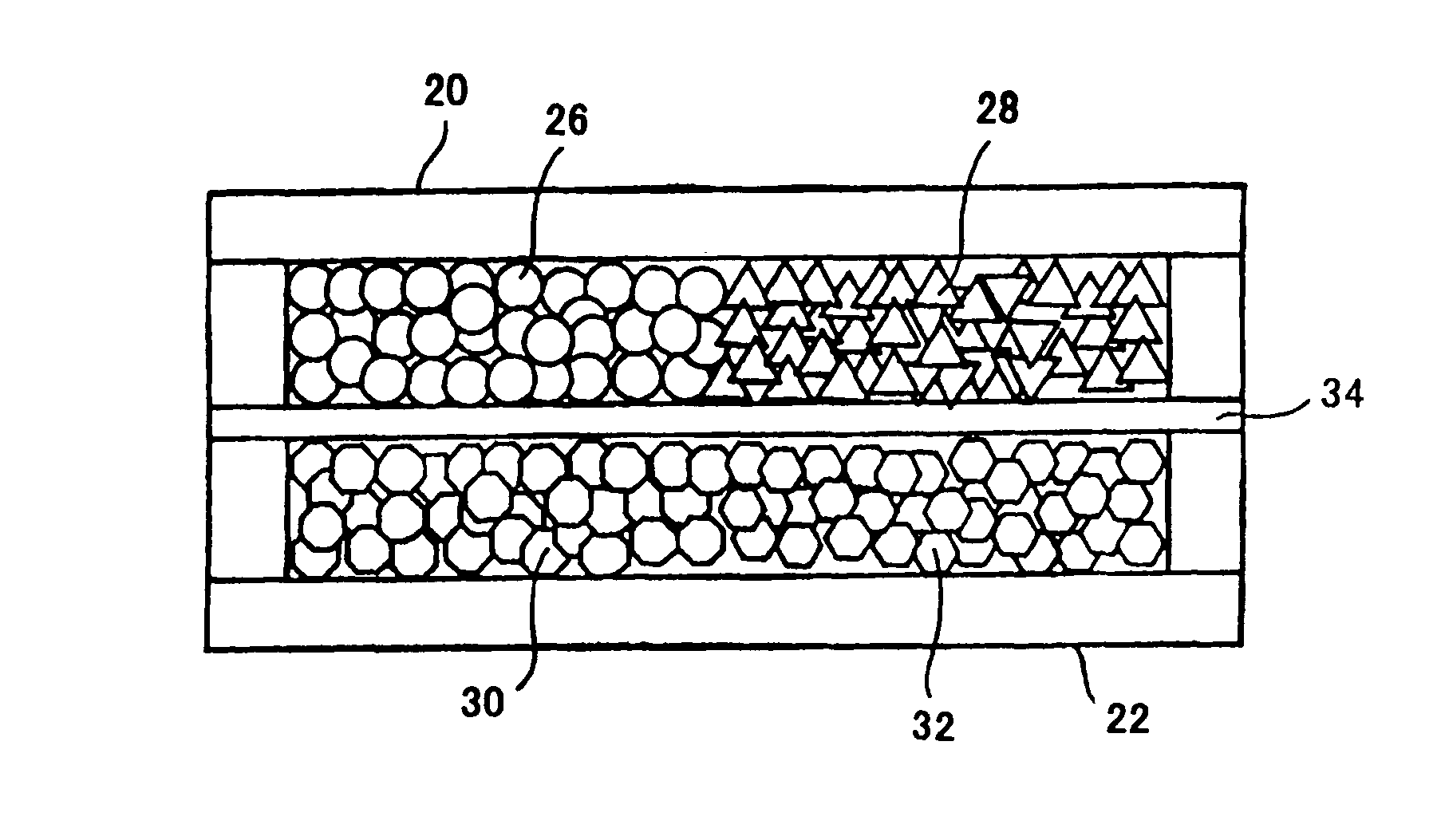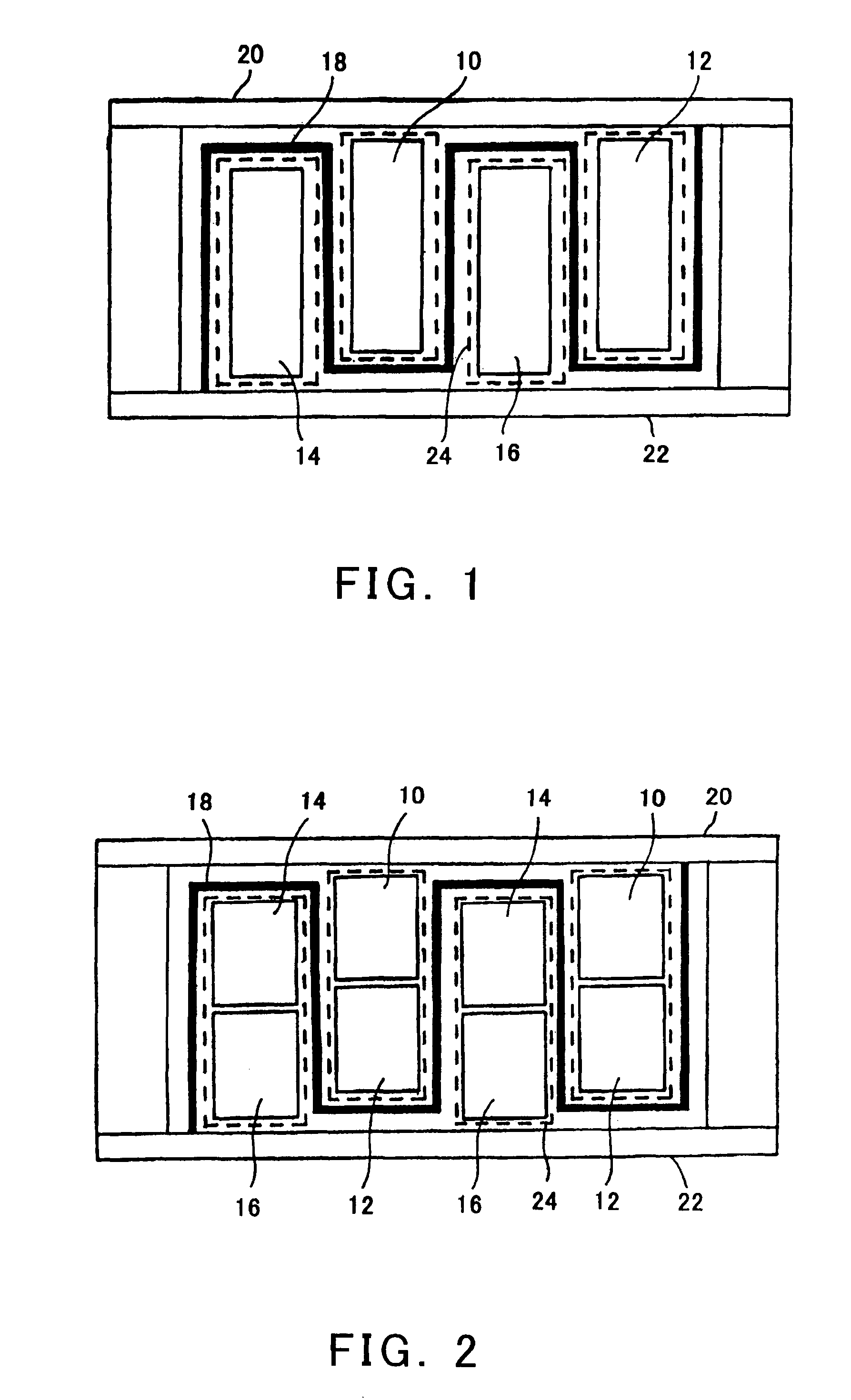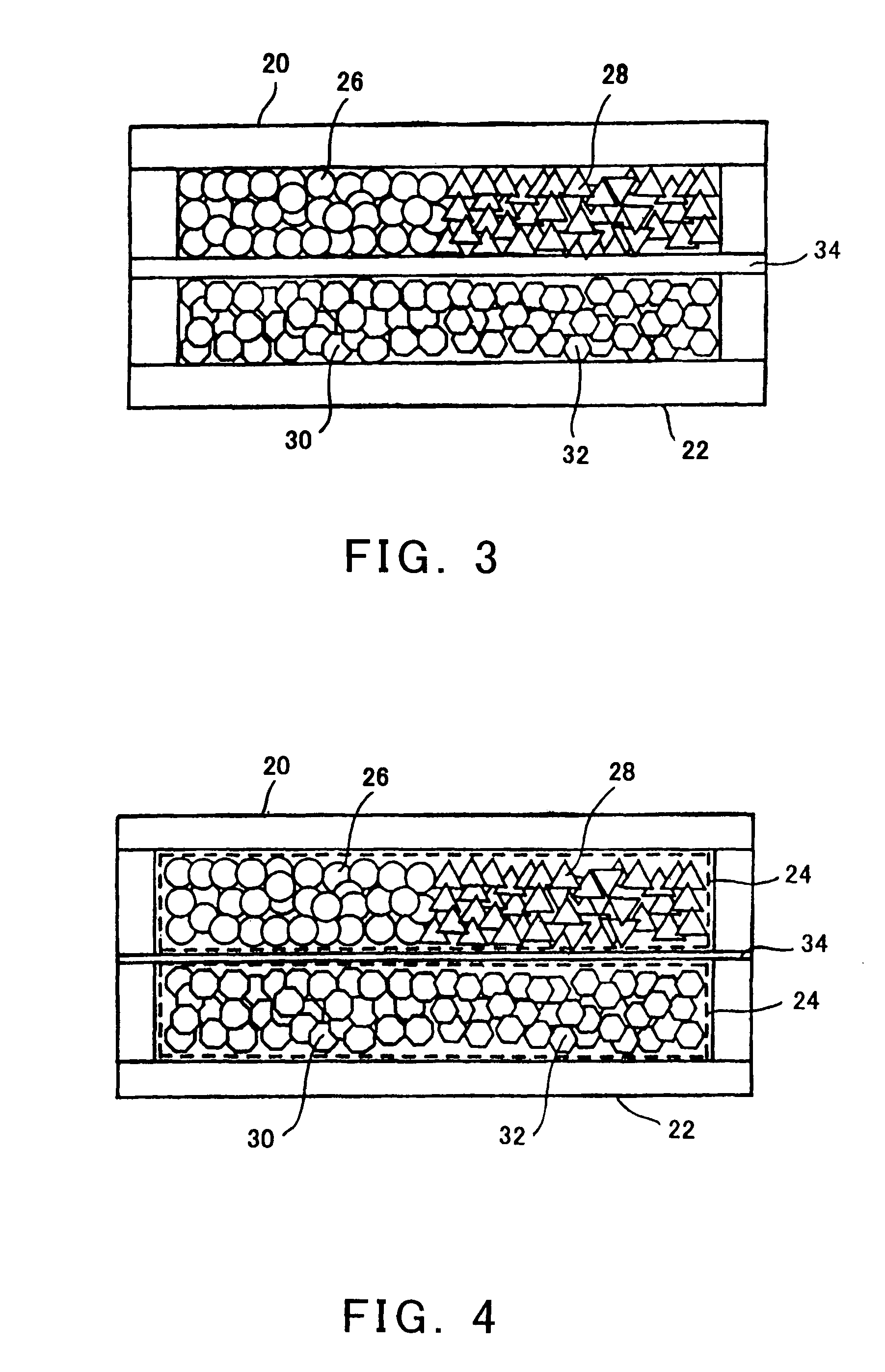Hybrid battery
a hybrid battery and battery technology, applied in the field of hybrid batteries, can solve the problems of shortening the life of the battery, affecting the quality of the battery, and the energy of the battery assembly is too large, and achieves the effects of high power, large energy capacity, and high power
- Summary
- Abstract
- Description
- Claims
- Application Information
AI Technical Summary
Benefits of technology
Problems solved by technology
Method used
Image
Examples
first embodiment
[0031]FIGS. 1 and 2 illustrate hybrid batteries according to the present invention. A resin and an electrically conductive filler are added to active material causing a cell reaction and the resultant mixture is cured to form an active material forming product in the shape of particle, plate, block, rod or the like. In this case, it is possible to use a postformed product of particulate active material. All active materials can be used as the active material causing cell reaction regardless of the type of the battery in which they are to be used and regardless of whether the cathode or the anode in which they are to be used. In the case of a nickel-hydrogen secondary battery, for example, a plate-shaped cathode active material can be prepared by pressurized forming after mixing of nickel hydroxide powder, EVA resin and the electrically conductive filler. Similarly, a plate-shaped anode active material for use in such a nickel-hydrogen secondary battery can be prepared by pressurized...
second embodiment
[0044]FIGS. 3 and 4 illustrate hybrid batteries according to the present invention. A resin and an electrically conductive filler are added to active material causing a cell reaction and the resultant mixture is cured to form a particulate active material forming product. In this case, it is possible to use a postformed product of a particulate active material. All active materials can be used as the active material causing cell reaction regardless of the type of the battery in which they are to be used and regardless of whether the cathode or the anode in which they are to be used. For example, in the case of a nickel-hydrogen secondary battery, a particulate cathode active material can be prepared by mixing and granulation, or pressurized forming or the like after mixing of nickel hydroxide powder, EVA resin and the electrically conductive filler. Similarly, a particulate anode active material for use in such a nickel-hydrogen secondary battery can be prepared by mixing and granul...
third embodiment
[0056]FIGS. 5, 6 and 7 illustrate hybrid batteries according to the present invention. A resin and an electrically conductive filler are added to active material causing a cell reaction and the resultant mixture is cured to form an active material forming product in the shape of a plate, block, rod or the like. In this case, it is possible to use a postformed product of the active material having been formed into particle. All active materials are usable as the active material causing cell reaction regardless of the type of the battery in which they are to be used and regardless of whether the cathode or the anode in which they are to be used. For example, in the case of a nickel-hydrogen secondary battery, a cathode active material in the shape of block or plate can be prepared by pressurized forming after mixing of nickel hydroxide powder, EVA resin and the electrically conductive filler. Similarly, an anode active material in the shape of block or plate for use in such a nickel-h...
PUM
| Property | Measurement | Unit |
|---|---|---|
| evaporating temperature | aaaaa | aaaaa |
| softening point | aaaaa | aaaaa |
| temperatures | aaaaa | aaaaa |
Abstract
Description
Claims
Application Information
 Login to View More
Login to View More - R&D
- Intellectual Property
- Life Sciences
- Materials
- Tech Scout
- Unparalleled Data Quality
- Higher Quality Content
- 60% Fewer Hallucinations
Browse by: Latest US Patents, China's latest patents, Technical Efficacy Thesaurus, Application Domain, Technology Topic, Popular Technical Reports.
© 2025 PatSnap. All rights reserved.Legal|Privacy policy|Modern Slavery Act Transparency Statement|Sitemap|About US| Contact US: help@patsnap.com



